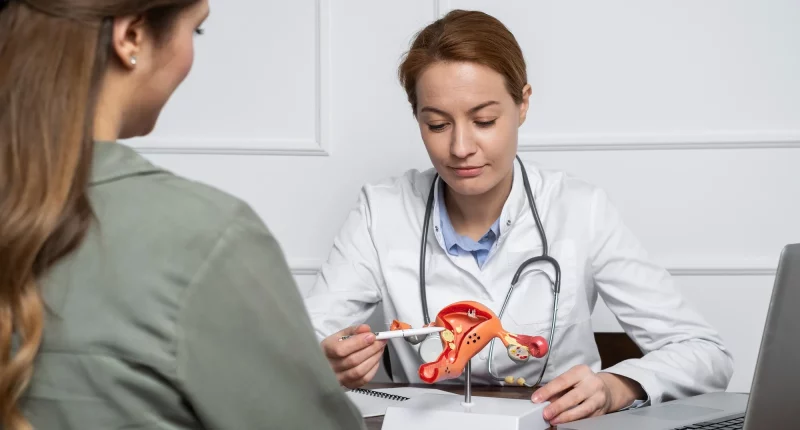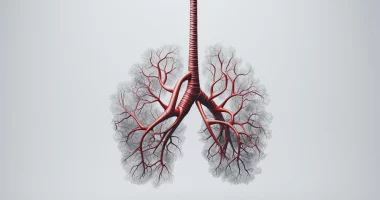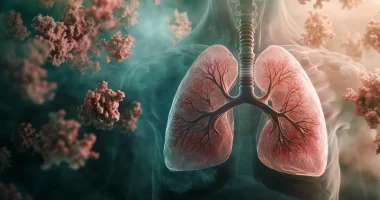Adenomyosis is a condition where the tissue that lines the inside of the uterus starts to develop into the muscular wall. This can cause symptoms similar to those of endometriosis, such as painful and heavy periods. However, some people with adenomyosis may not have any symptoms at all.
The signs of adenomyosis change during the menstrual cycle because the levels of estrogen, a hormone, go up and down. This hormone causes the lining of the uterus to shed, leading to various symptoms.
Most people find that their symptoms get better or go away completely after menopause. This is because menopause causes a natural drop in estrogen levels.
Adenomyosis is quite common. A review of 16 studies found that between 20% and 88.8% of females with symptoms of adenomyosis actually had the condition of 30-35% average. Most females are diagnosed with adenomyosis between the ages of 32 and 38.
These numbers might be lower than the actual rates because doctors often diagnose adenomyosis only after examining a uterus that has been removed during a hysterectomy. This allows that many cases might not be included in the research.
Difference Between Adenomyosis and Endometriosis
Adenomyosis and endometriosis are similar conditions, but they have some key differences.
Adenomyosis: This happens when the cells that normally line the inside of the uterus start growing into the uterus muscle.
Endometriosis: In this condition, the cells that normally line the interior side uterus develop exterior side of the uterus, often on the fallopian tubes, ovaries, or other areas in the pelvis.
Both conditions are common, but they tend to affect women at different ages. Endometriosis is more frequently diagnosed in women aged 30s and 40s, while adenomyosis is more common in women aged 40 to 50 years.
A person can have both adenomyosis and endometriosis at the same time. The signs of both conditions usually improve or go away after menopause because of the natural decrease in estrogen levels.
Symptoms of Adenomyosis
The symptoms of adenomyosis can vary greatly from person to person. About one-third of women with adenomyosis do not experience any signs. However, for others, the symptoms can be severe enough to disturb daily life.
Common symptoms of adenomyosis include heavy bleeding in periods, painful periods, and painful sex. Some people may also experience blood loss between periods and Uterine cramps often worsen. Additionally, the uterus can become enlarged and sensitive, leading to normal pain around the pelvic area. This condition can also lead to the sensation of pressure on the rectum and bladder, as well as pain during defecation.
These signs can significantly affect a person’s quality of life and may require medical attention for proper management.
Causes of Adenomyosis
The exact cause of adenomyosis is still unclear, but doctors have a few theories:
One theory suggests that adenomyosis may develop during fetal development, meaning it could be present from birth. According to this theory, the condition starts when the first formation of the fetus.
Another possibility is that inflammation in the uterus increases the chances of adenomyosis. This inflammation can occur during uterine surgeries, which might make the condition more likely to develop.
A third theory involves invasive tissue. If the uterus is injured, for instance during a cesarean or other surgeries, it may lead to adenomyosis. This happens because the endometrial-like tissue develops into the uterus muscle following the injury.
Diagnosing Adenomyosis
Diagnosing adenomyosis starts with a visit to a doctor. During the consultation, the doctor will enquire about your medical history and carry out a pelvic examination.
During the pelvic exam, you might feel sensitiveness in your uterus. If the doctor notices that your uterus is slightly enlarged and doubts adenomyosis, they may recommend additional tests, including:
- Ultrasound: This imaging test allows the healthcare provider to look for areas where the tissue line of the uterus has grown into the uterus muscle.
- MRI: An MRI scan provides a detailed image of the inner muscle of the uterus, helping the doctor to identify signs of adenomyosis.
- Endometrial Biopsy: The doctor may take a small sample of tissue from the lining of the uterus to test for other conditions. While this won’t identify adenomyosis, it assists rule out other possible causes of your symptoms.
These tests can suggest the presence of adenomyosis but cannot confirm it definitively. A definitive diagnosis is only possible after a hysterectomy, where a specialized doctor, called a pathologist, inspects the tissue with the help of a microscope.
Treating Adenomyosis
If adenomyosis isn’t treated, it can stay the same or get worse over time.
Treatment might not be needed if you don’t have symptoms, aren’t trying to be pregnant, or are close to menopause when symptoms often improve.
But if you do need treatment, there are several options:
Anti-inflammatory medications
Drugs like ibuprofen can help decrease pain and discomfort.
Medications
Birth control pills, progestin intrauterine devices (IUDs), or injections like Depo-Provera can ease symptoms. Doctors may also suggest gonadotropin-releasing hormone (GnRH) agonists or antagonists, but typically for a short time because they can cause temporary or false menopause. In rare cases, these drugs may be used long-term if other treatments don’t work.
Uterine artery embolization
This procedure involves injecting tiny particles into a big artery in the groin, cutting off blood supply to the affected area. This can shrink the adenomyosis and lessen symptoms.
Hysterectomy
This surgery removes the uterus completely and is the only way to cure adenomyosis. It might not be a good choice if you want to have children unless all other treatments have stopped working and focus on pain relief over the possibility of getting pregnant.
When to consult a doctor
If you’re not trying to be pregnant and you don’t have any symptoms, you might not need treatment for adenomyosis. However, if you suspect you have adenomyosis, it’s a good idea to talk to your doctor for an evaluation.
It’s especially important to speak with your doctor if you’re having heavy menstrual cycles or period cramps. These symptoms can be signs of other severe conditions, so it’s crucial for your doctor to evaluate them and identify the cause.
Outlook
Adenomyosis isn’t life-threatening by itself, but it can cause a lot of discomfort.
The good news is that once you reach menopause, adenomyosis usually goes away. However, before that happens, it can make you feel really uncomfortable and even cause to complications.
If you think you might have endometriosis or adenomyosis, it’s important to talk to your doctor. There are treatments available that can assist ease the symptoms and make you feel better. Don’t hesitate to seek medical advice if you’re experiencing symptoms of either condition.









